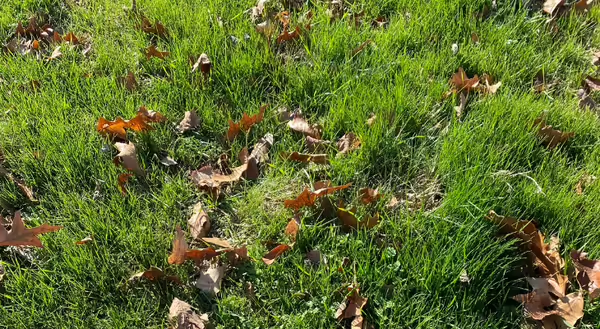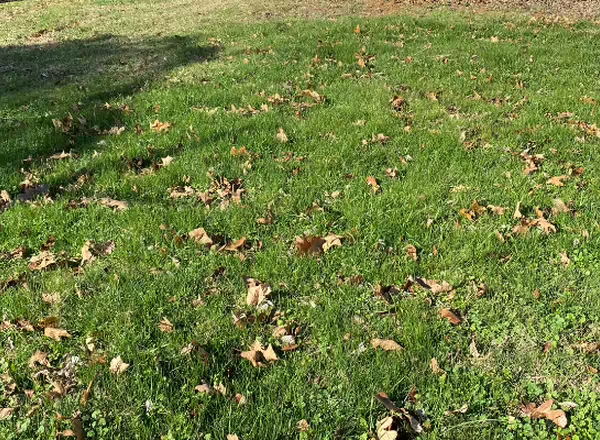
As the days shorten and winter approaches, nature has taken on a bleaker appearance. Deciduous trees have lost their leaves, wildflowers have gone to seed, and many plants have taken on a straw to brown color as their aboveground growth dies for the season.
How does your lawn look? One place that might still be green is your turfgrass, depending on where you live and what type of grass your lawn is made of.
My lawn currently looks like a patchwork quilt, with different shades of greens and browns dappling the yard. We had landscaping work done in September, and much of our grass was torn up during the process. This is when we learned we had a lawn composed of mostly weedy grasses that I wouldn’t call turfgrass. Beadgrass, crabgrass, yellow foxtail, oh my! But the majority of our grass was bermudagrass. Bermudagrass has very short roots, so when heavy machinery drove across it, it simply tore out of the ground. This left us with very large bare swatches of our yard.
While part of our project involved removing some of our lawn to add landscaping beds with native plants and our long-term goal is to remove a large portion of our lawn, we did need to reseed parts of our lawn in the meantime so we didn’t have a big mud pit. Living in zone 7a, we opted for a tall fescue lawn. The contrast between our previous lawn grasses and our new grasses is stark, especially now in the fall! Bright green patches run into seemingly dead brown patches. Why are some of these grasses still green while others are brown?


Why the difference?
It may seem odd that some grasses die back while others remain green, but maybe not so much if compared with deciduous and evergreen trees and shrubs. For grasses, the difference comes from the two main groupings of grasses, warm-season and cool-season. Warm-season grasses complete most of their growth in the heat of the summer, and they are less adapted to the cool temperatures of fall and winter. These grasses therefore die back aboveground during the cool seasons. Cool-season grasses, on the other hand, are able to retain their chlorophyll through the colder seasons. Their growth slows to an almost imperceptible pace, waiting for spring to ramp up their growth for the next year.
Most folks in northern Illinois have cool-season lawns with grasses like Kentucky Bluegrass, which stay green throughout the winter. On the opposite end of the state, we are in the transition zone between cool-season and warm-season grasses, so depending on what turf people select, driving through a neighborhood in winter can show you one green lawn followed by one brown one, and so on (and then those of us who have less tidy lawns that are a mix of both!). One popular warm-season turfgrass is zoysia grass.
Take a look at your lawn
This is a good time of year to check in on your lawn – if you have a cool-season lawn and see brown patches, it could be a patch of a warm-season grass that might not be desired in your turf, and vice versa. You can also spot other plants that are still green like clover and creeping Charlie (my lawn is full of both). If you don’t know what type of turf you have, take some time to learn a bit more about your lawn this fall, remembering that green means cool-season and brown means warm-season. Then learn more about different types of turfgrasses common in Illinois.
Never miss a new post! Sign up for our email list.
ABOUT THE AUTHOR: Erin Garrett is a Natural Resources, Environment, and Energy Educator for University of Illinois Extension serving Alexander, Johnson, Massac, Pulaski, and Union counties. Erin develops and delivers high impact programming to adults and youth to help them develop an appreciation for natural resources and to empower them to make small changes to positively impact the environment. Erin’s programming focuses on why homeowners should consider choosing native plants, how to support native pollinators, how to identify grasses, how to identify and manage invasive species, and developing an appreciation for prairie ecosystems.
ABOUT THE BLOG: Grasses at a Glance dives into grass identification, focusing on tips and tricks that make grass identification possible. Get information about native and non-native species, how to tell look-alikes apart, and which grasses you can find in Illinois.